
Cucumbers are relatively easy to grow, but they can take up quite a lot of space in your garden, but provide a trellis or support for your cucumbers and you can grow them vertically, yielding more cucumbers in less space.
In this article, we’ll explore twelve cucumber trellis ideas to help you grow more in your garden and discuss some of the options you can consider when making them yourself at home.
Why Trellis Cucumbers?
First of all, it is important to understand that you do not necessarily have to provide a trellis as support for cucumbers. You can simply allow them to trail as they will on the ground but by providing supports for your plants, and training them to grow more vertically, you can often achieve far better results.
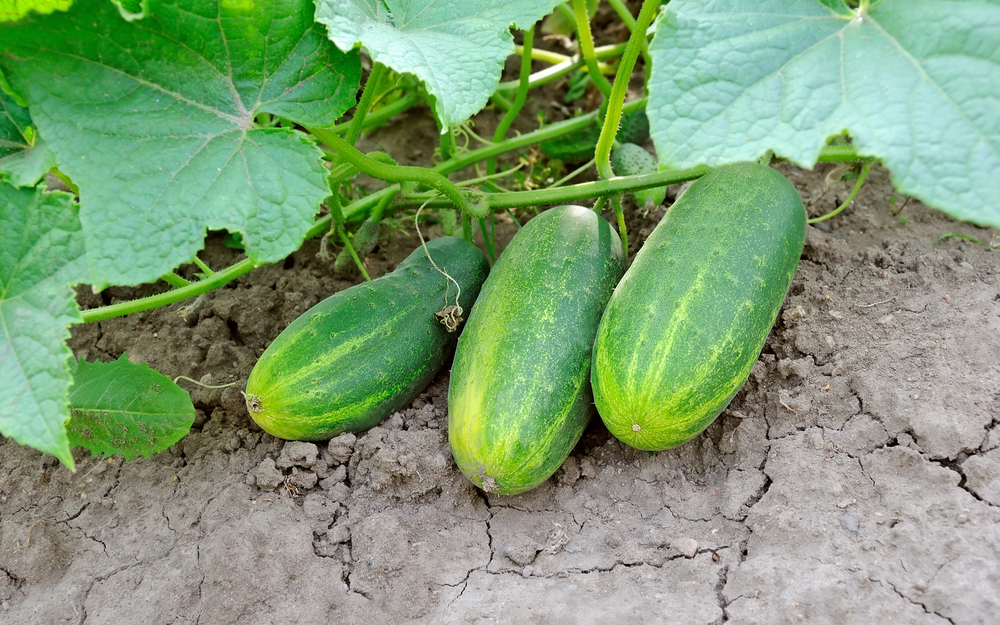
When we talk about trellising cucumbers, we are of course talking about vining rather than bush types. Bush types will have a more compact habit of growth. And so of course, they will require less support than vining varieties.
Trellising Improves Cucumber Quality
If you trellis cucumbers, this will not only mean that they will take up less space in your garden, it can also help improve quality if you keep the fruits up off the ground. The cucumbers you get on a trellised plant will tend to be more perfect and less blemished than those that have been allowed to trail. And disease and pest problems can often be kept to a minimum.
Trellising Can Make It Easier For the Gardener
Another thing to consider is that cucumbers growing up a trellis will be easier to water, and to harvest so when you trellis cucumbers, it makes it easier for you as the gardener.
A trellis is not the only option. You can also grow cucumbers in hanging baskets or other hanging containers.
Remember, the trellises that you use to support your cucumbers can also support other companion crops. Pole beans, for example, are one good companion for cucumbers that can share their trellis. And peas are another nitrogen fixer that it could be beneficial to sow alongside your cucumber plants. Nasturtiums are also a useful companion plant for cucumbers that could look great when set to climb the same trellis.
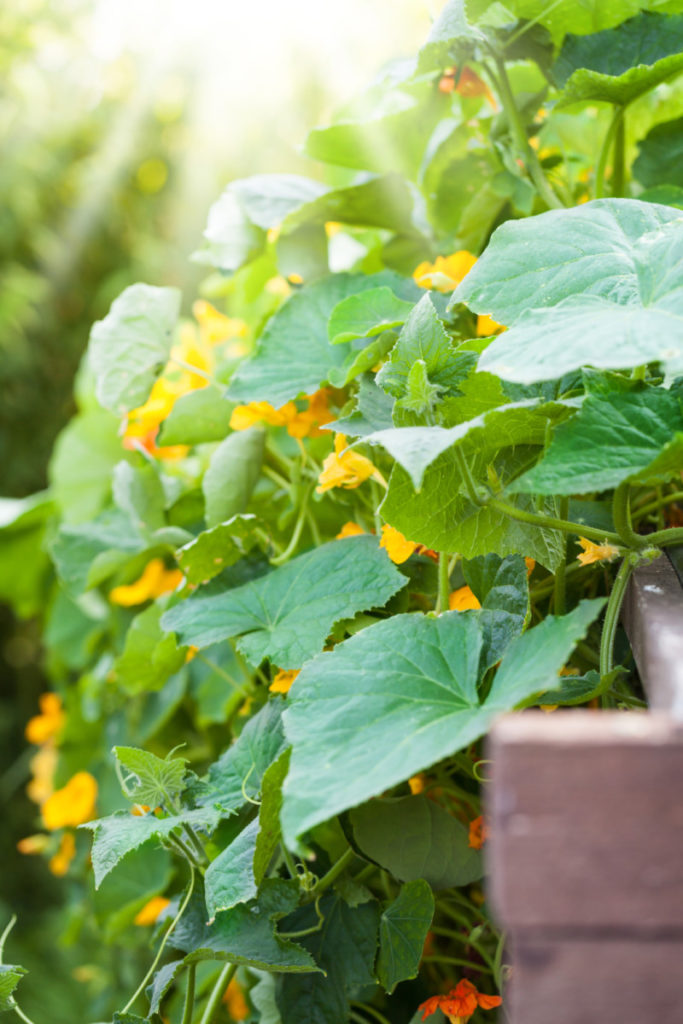
But what sort of trellis should you choose? There certainly are plenty of options.
To make it a little easier for you to make the right choice for your garden, I’ve come up with 12 different trellis ideas for you to consider.
And under each of these ideas, I will suggest a few different materials you could consider using to make a trellis of that type.
Read on to gain inspiration for your cucumber garden.
Cucumber Trellis Types
1. Vertical Fence
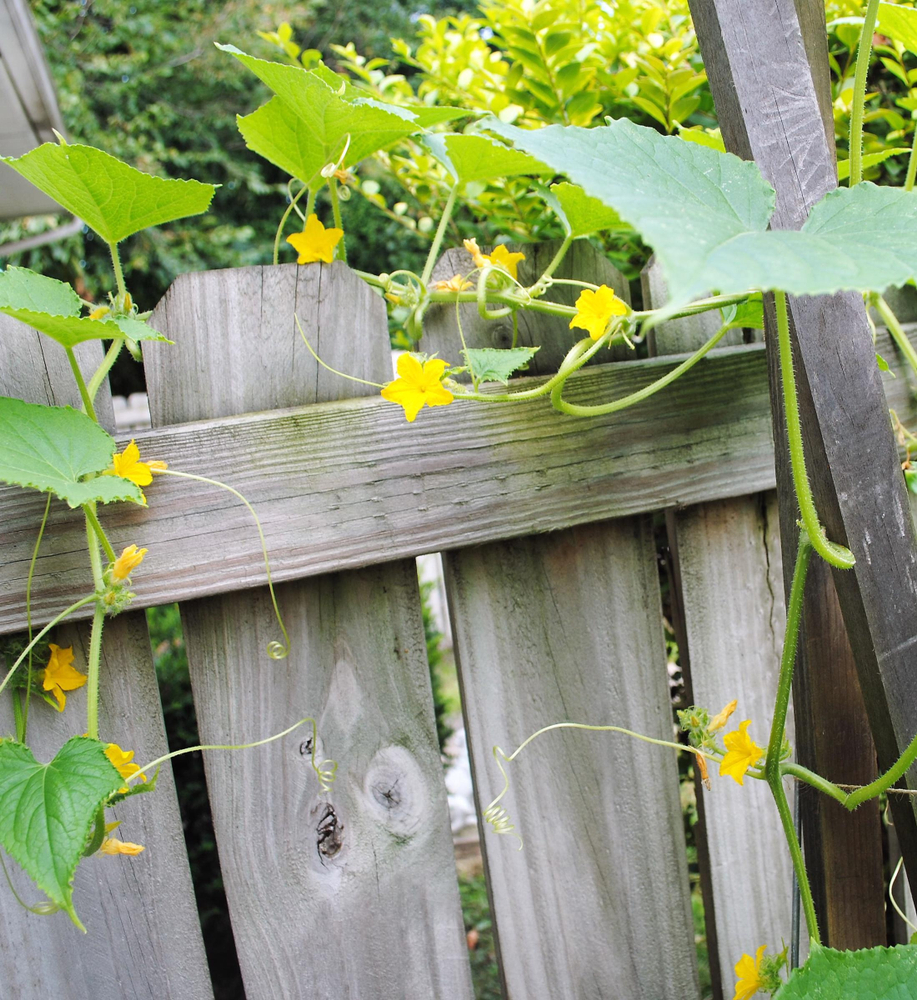
Perhaps the simplest way to grow cucumbers vertically is to grow them up an existing fence, or to create a new fence that can do double duty as a trellis too.
Growing cucumbers and other vining plants up a chain link fence can make it far more attractive through the growing season – as well as increasing growing space on your property.
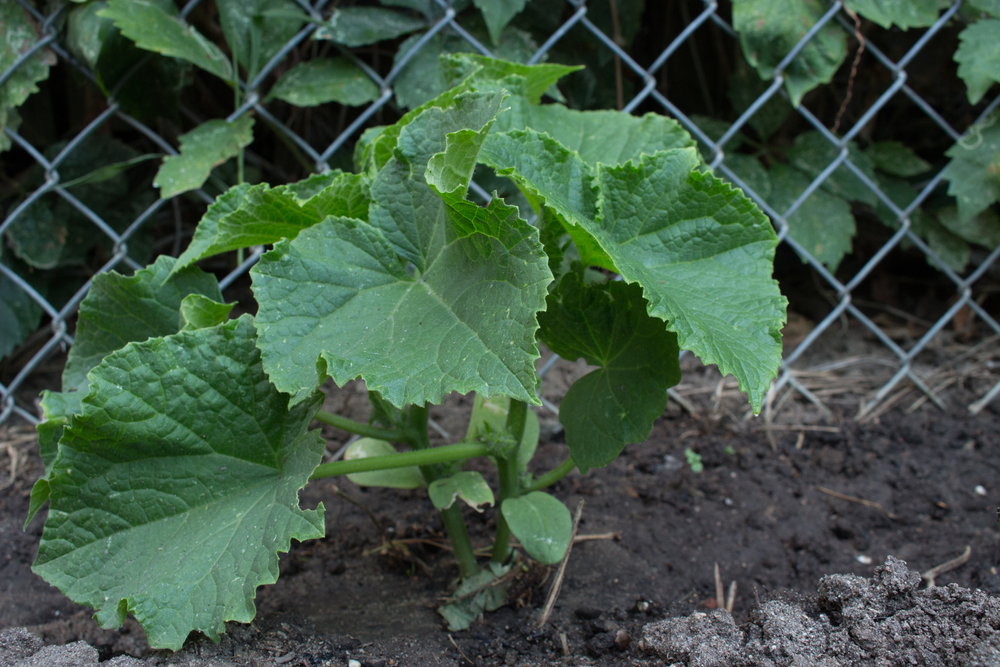
But other simple types of fencing – such as pallet wood or reclaimed wood fencing, wattle fences or other fences made with branches could also serve as support for cucumber plants.
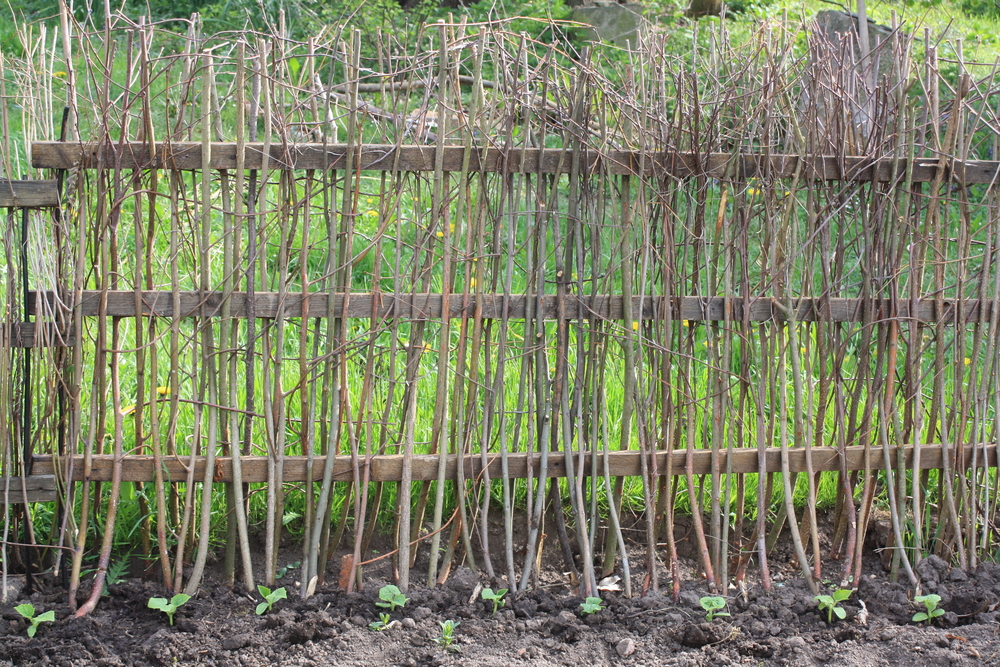
2. Fence or Wall Mounted Trellis
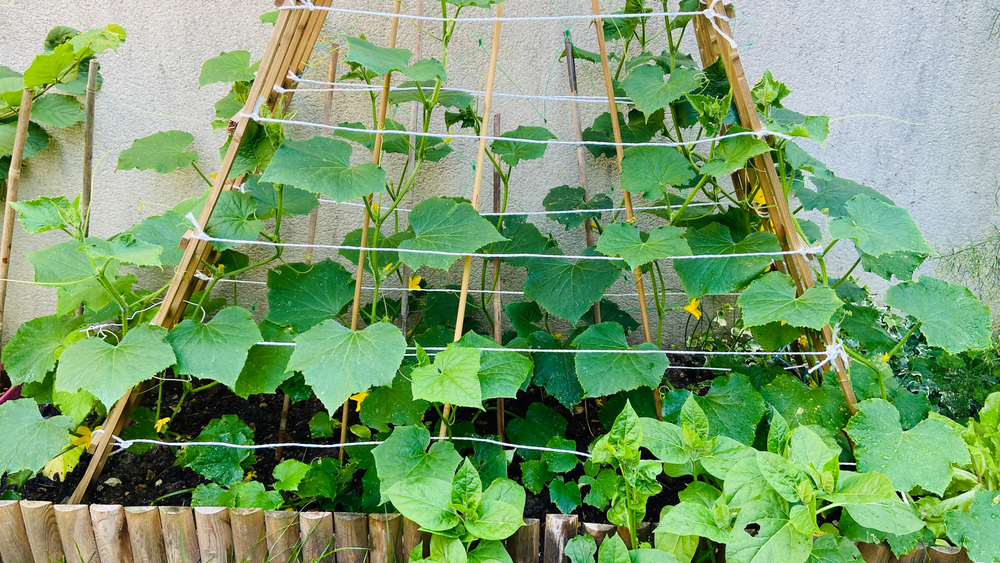
If you have a sunny, south facing wall or fence that is flat, you could also consider placing containers, planters or a raised bed at its base in which to grow cucumbers. You could then affix a trellis made from a range of different materials to this existing structure.
For example, you could drive hooks in at the top of the wall or fence, and grow cucumbers up twine attached to these hooks and secured at the base.
You could also create a structure from bamboo, or natural branches from your garden, for example, and secure this structure against the wall or fence.
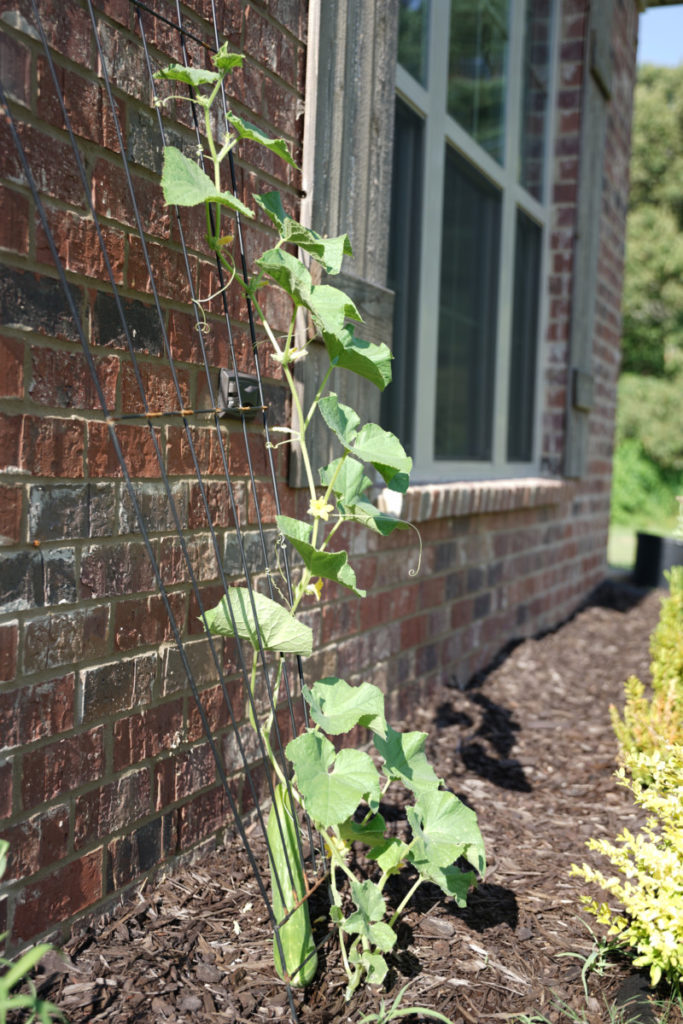
You could also affix (or lean) any other simple trellis against a suitable wall or fence. So there are plenty of easy and cheap options to consider.
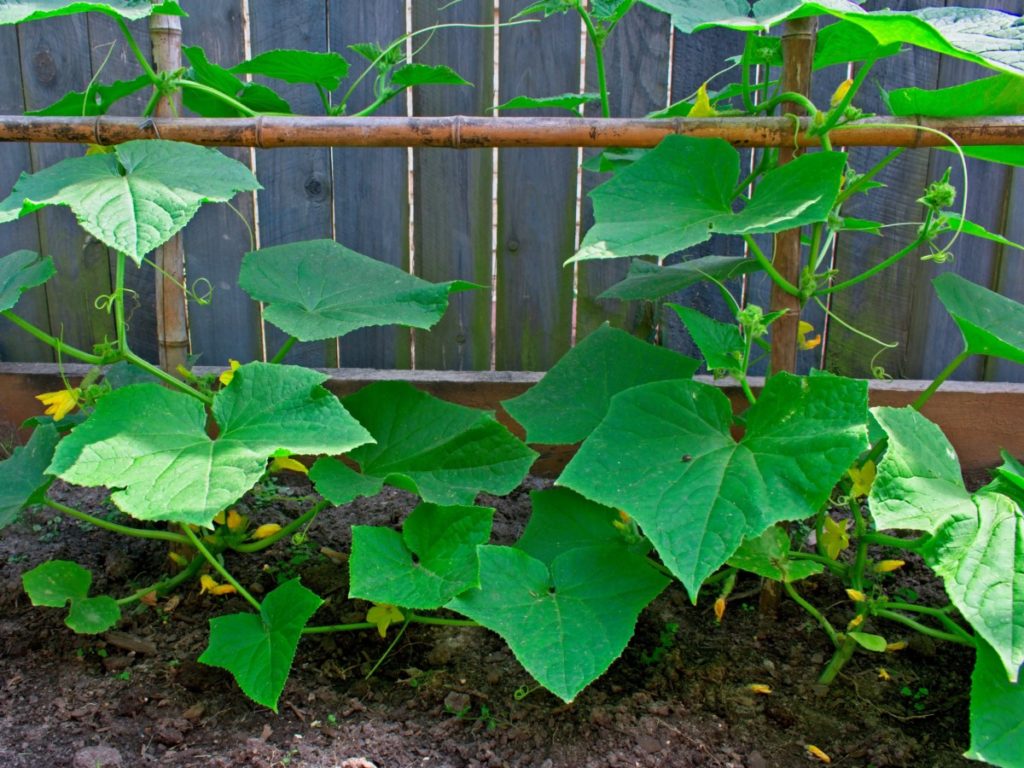
Of course, you could buy a ready made trellis for the purpose. But it is so easy and affordable to make your own that buying a purpose build trellis will not usually be necessary. Think about natural or reclaimed materials that you could use before you buy anything.
3. Stand-Alone Vertical Trellis
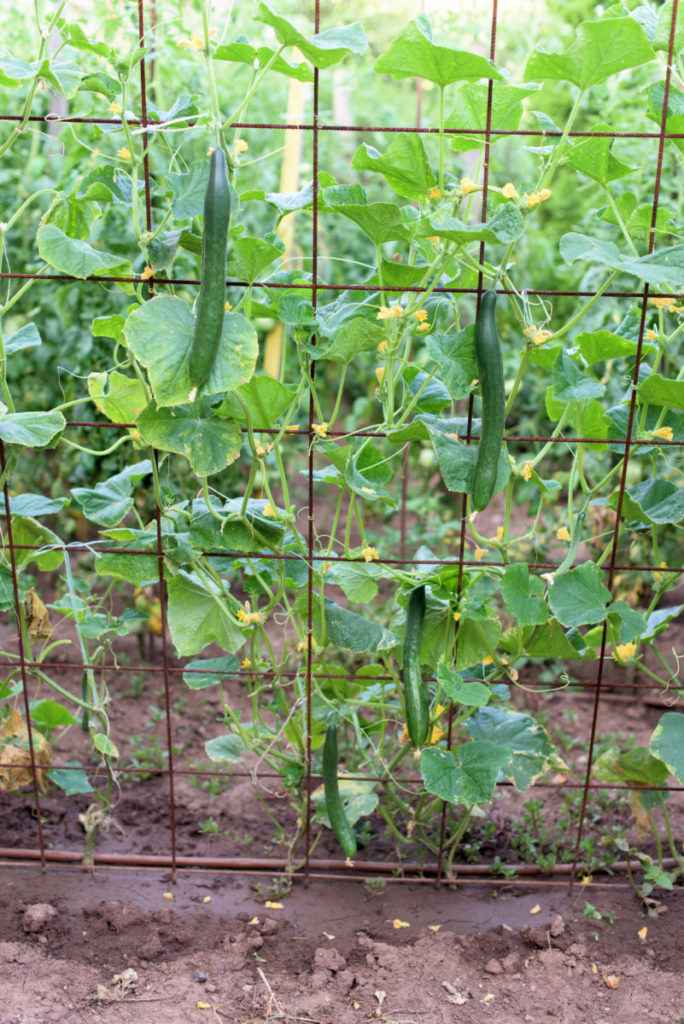
Of course, you do not have to have a wall or fence to make a trellis. There are a number of ways to make a vertical, free-standing trellis for your garden. And a huge number of natural or reclaimed materials that you could use to do so.
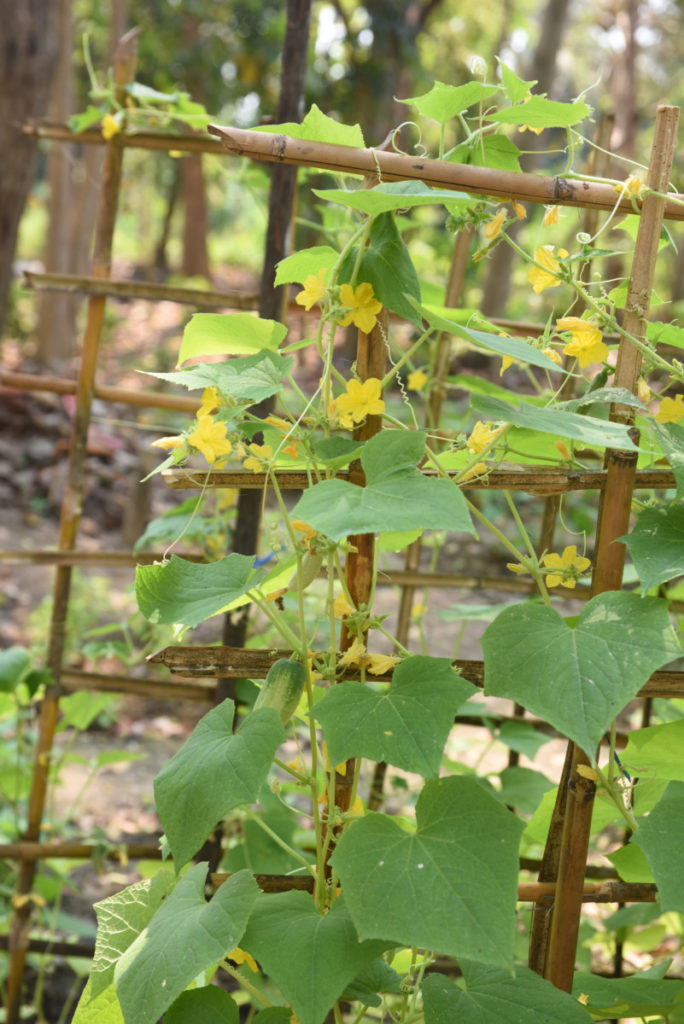
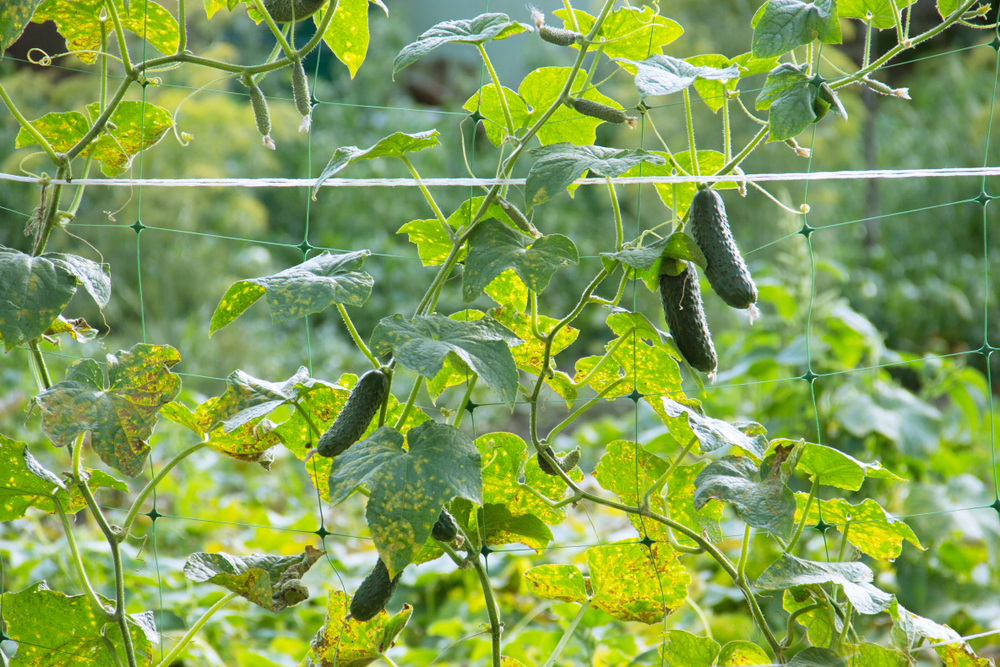
A few examples of the different ideas in this vein that you could consider can be found by following the links below:
Simple Cucumber Trellis @ veggiegardener.com.
Squash and Cucumber Trellis @ fromseedtoscrumptious.blogspot.com.
4. A-Frame Trellis
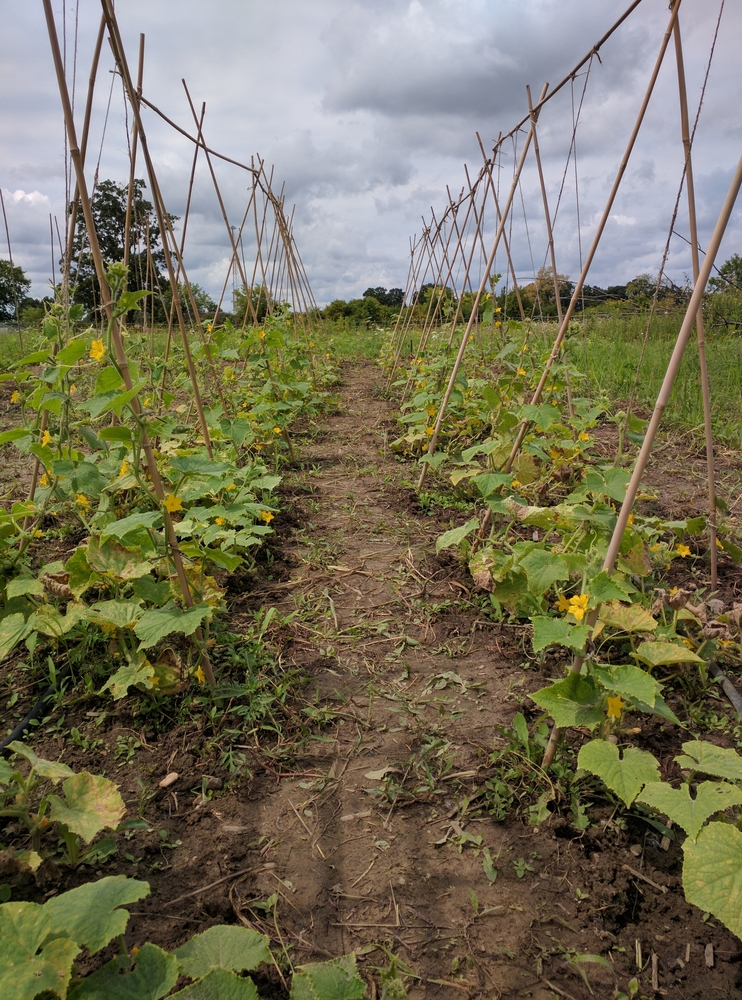
An A-frame structure is also a good idea for a cucumber trellis that is sturdy enough to support a number of plants.
A-frame structures can be created using a range of different materials. Often, a simple A-frame will be made from reclaimed wood, branches, logs or bamboo. The sides of the A-frame can then be fitted with netting, dowels or strings for cucumbers to climb.
Here are a couple of ideas – one very sturdy, one much more lightweight – to consider:
DIY Cucumber Trellis For Free @ therealfarmhouse.com.
Folding A-Shaped Frame @ allotment-garden.org.
5. Tent-Shape Trellis
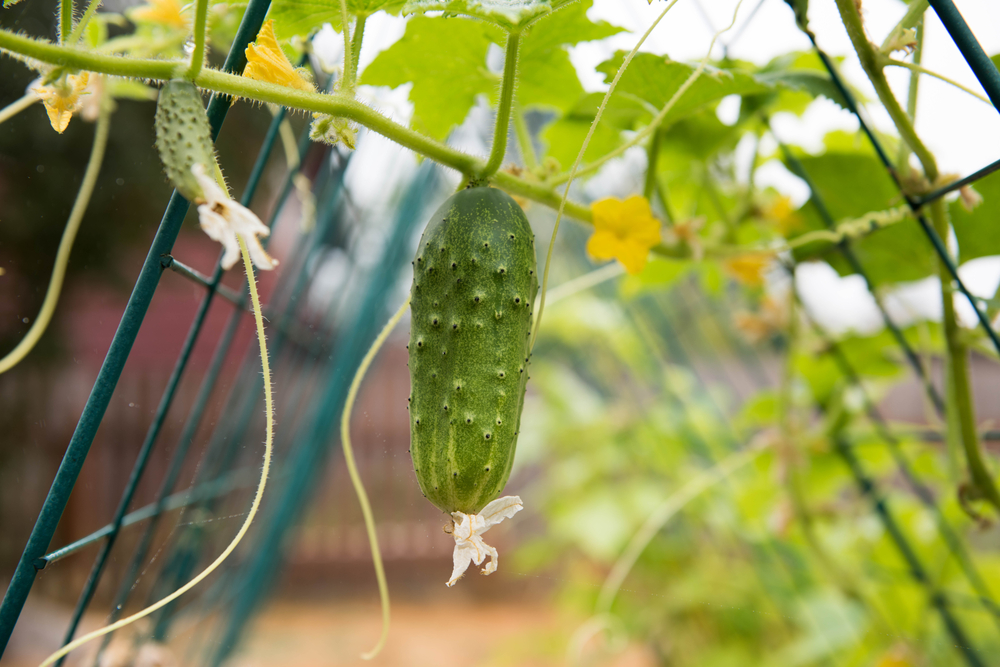
Tent-shaped trellises are similar to the A-framed options. But these do not necessarily have to have a sturdy supporting frame. A couple of varied ideas within this category can be found by following the links below.
Make a Cucumber Tent Trellis @ bonnieplants.com.
Another idea involves making a more elaborate support structure using PVC pipe. This structure ultimately makes a sturdy structure that looks a little like a large tent.
PVC Cucumber Trellis @ pvcplans.com
6. Ladder Type Trellis
If you want to keep things simple, you could create a trellis by simply using an old step ladder for the purpose.
Cucumber Trellis from a Wood Ladder @ diydanielle.com
If you don’t happen to have an old ladder lying around, however, you could consider constructing a simple ladder like trellis. You might use bamboo canes, branches or reclaimed wood, for example.
7. Propped Pallet Trellis

Speaking of using reclaimed wood – you might not even have to do much construction work at all. One other simple trellis idea involves using a wood pallet or old wood trellis, simply propped up on two posts. This simple and easy idea could be perfect for growing cucumbers in a small raised bed.
Pallet Cucumber Trellis @ lovelygreens.com
8. Teepee Trellis
Another idea that works well for small spaces is a teepee or wigwam-like construction. A small teepee trellis could be perfect for cucumbers grown in containers. But you could make a larger teepee too to support a larger number of cucumber vines.
You can make your teepee structure using bamboo, branches, reclaimed wood or other materials. And it is a versatile type of trellis that you can create in any size – to suit your space and plants.
How To Make a Bamboo Teepee in a Minute @ themicrogardener.com.
9. Arch Trellis
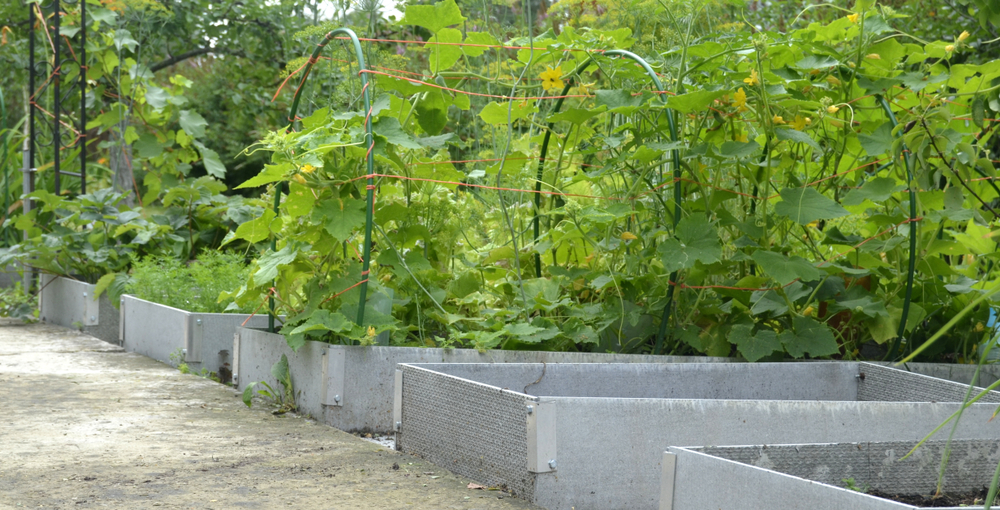
Another interesting idea to consider is an arch shaped trellis. Such a trellis can be a relatively low arch formed over a small bed, or growing area. Or it could be a much larger arch that could be created to span a pathway, with cucumbers or other vining plants growing up the sides.
In the link below, you will find instructions on making a simple, low arch trellis – perfect for shorter gardeners who may not be able to reach up to the top of a vertical trellis structure.
How to Make a Cucumber Arch Trellis @ getbusygardening.com.
10. Vertical Post and Twine Trellis
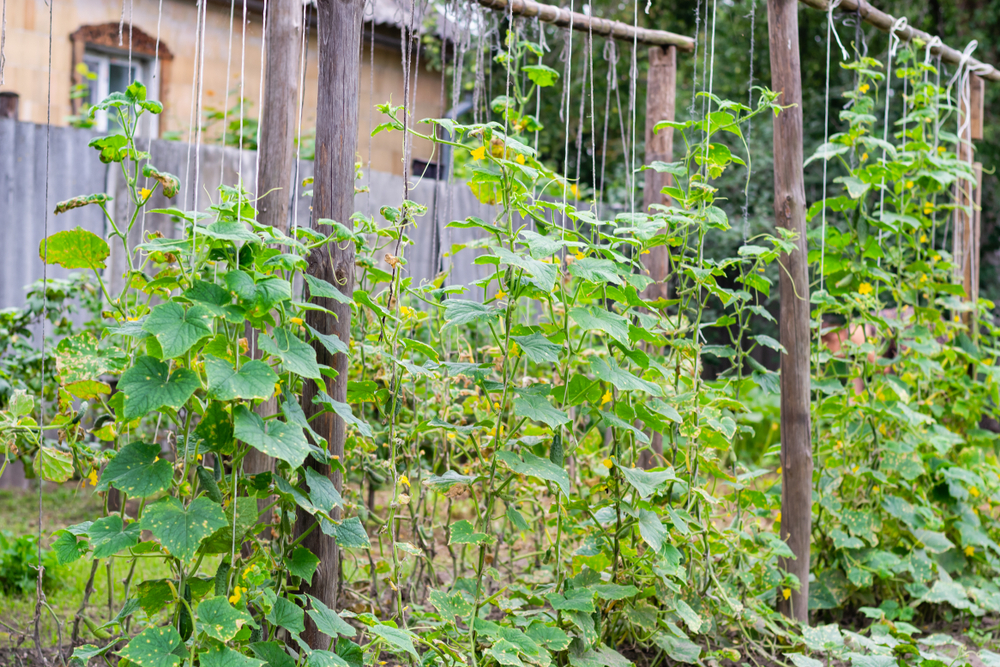
Vertical posts (logs, branches, canes or stakes) can be combined very simply with twine to make a range of further simple trellises – below is one example:
Twine Trellis @ gardenfork.tv.
Twine can be laced, strung vertically or horizontally between upright posts. So this can be a cheap and easy way to create long lengths of trellis to grow your cucumbers and other vining plants. As long as the structures are secure and strong enough to hold the weight of mature cucumber vines laden with fruit, they could be another good solution for your garden.
11. V-Shape Post and Twine Trellis
A variant of the above is to create a structure for a twine trellis with posts that are not vertical. Instead, the posts can lean outwards slightly to make a V shape. An advantage of using this shape for your trellis structure is that light will be able to reach to the centre, while fruits will hang on the outside of the V, and be easily spotted and harvested from the edges of the bed or growing area.
T-Posts & Twine V-Shape @ blog.seedsavers.org.
12. Cage-Type Trellis
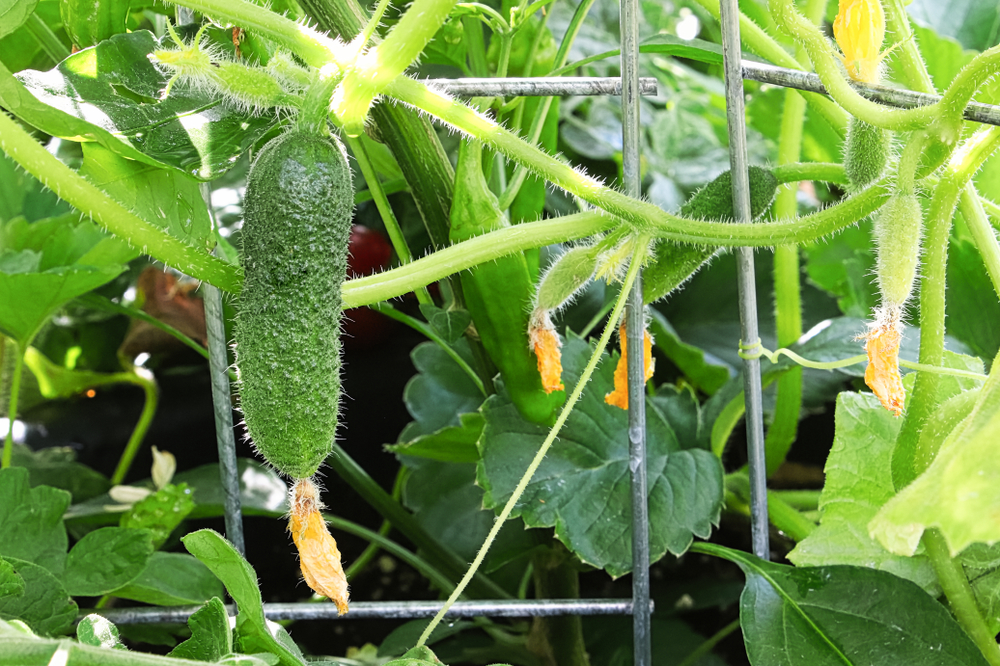
If you do not have the time to make a trellis for your cucumbers, you could also consider using a tall tomato cage type structure – after all, you can grow more than tomatoes in a tomato cage. You could buy one, or make your own very easily by shaping fencing or chicken wire into a cylindrical shape.
There are also plenty of other designs that build upon or amend the above ideas. You’ll find that there is no shortage of ways to create a cucumber trellis. But thinking about the different types of cucumber trellis listed in this article should help you narrow down your options, and find the solution best suited to your needs.

Get the famous Rural Sprout newsletter delivered to your inbox.
Join the 50,000+ gardeners who get timely gardening tutorials, tips and tasks delivered direct to their inbox.



